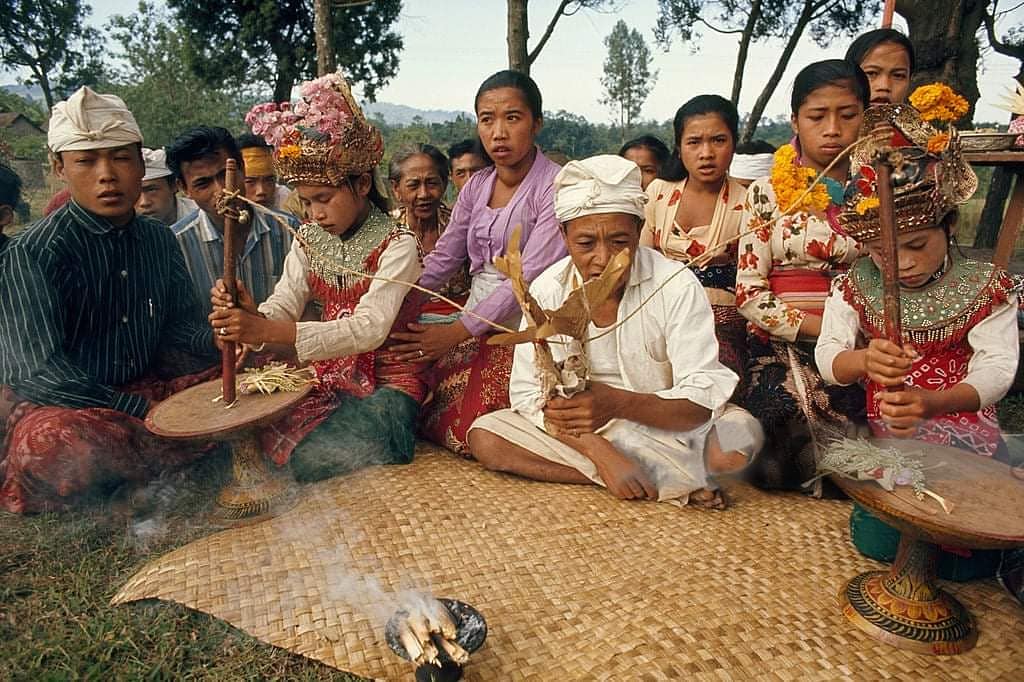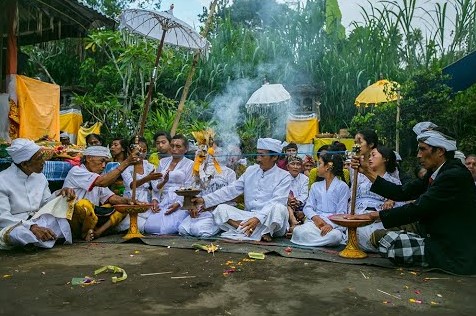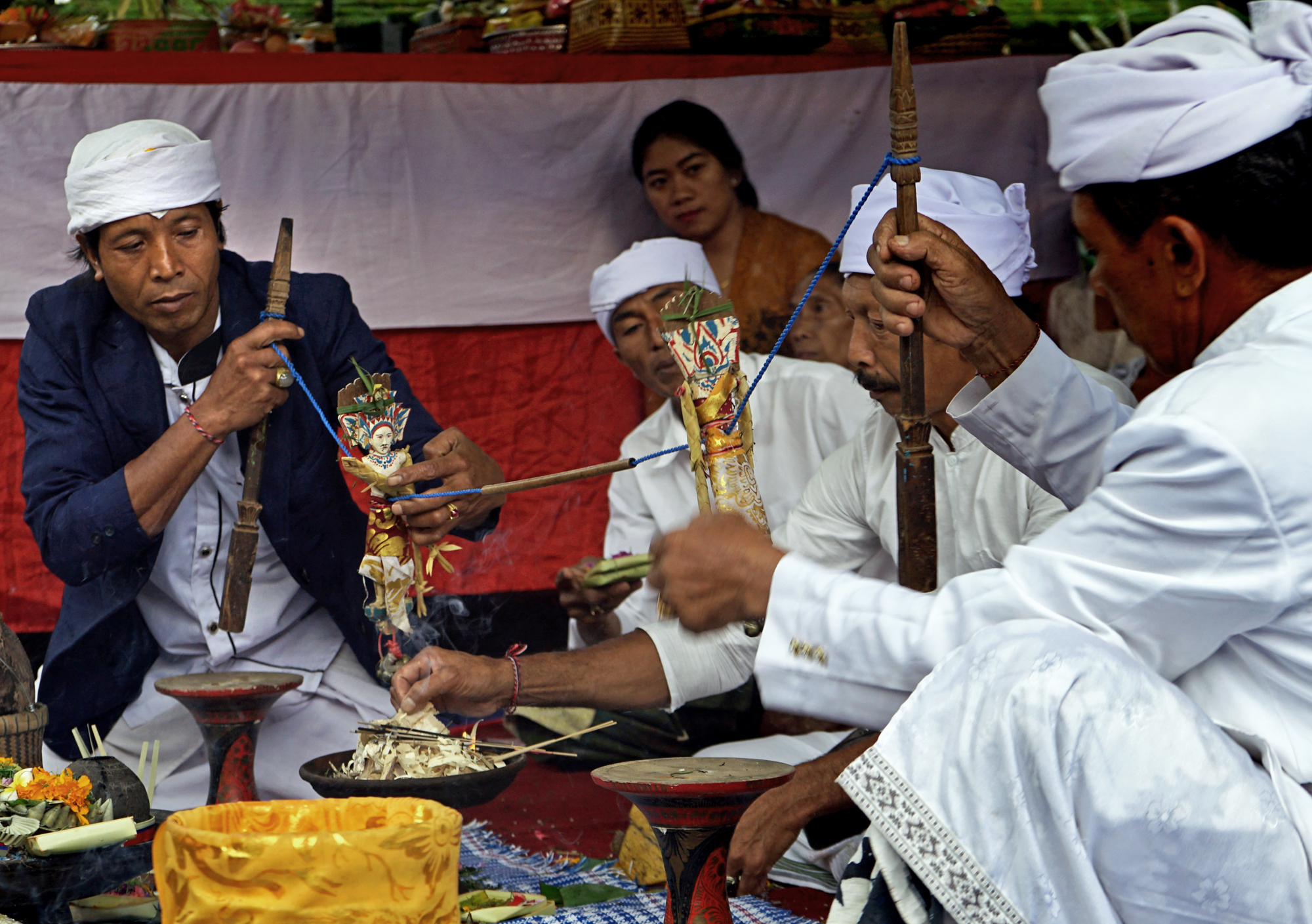In the serene highlands of Kintamani, a profound connection to the unseen unfolds through the captivating ritual of Tari Sanghyang Deling. It’s more than a mere performance; it's a living dialogue between the human and the divine, a sacred tradition that continues to resonate with the heart of Balinese spirituality.
It’s more than a mere performance; it's a living dialogue between the human and the divine
A Sacred Ritual
Imagine the scene: villagers gather, their attention drawn to the unfolding ceremony. The ancient melodies of the gending sanghyang fill the air, their rhythmic chants creating an atmosphere of reverence. The fragrant smoke of burning incense drifts through the space, adding to the mystical ambiance.
At the heart of this ritual are two young girls, chosen for their purity. They serve as conduits, allowing divine spirits to manifest. Each girl holds a wooden pole, a channel for the energy about to descend. Suspended from these poles are the deling, small dolls crafted from lontar palm leaves. These are not mere objects but sacred symbols capable of being animated by spiritual forces.

Moved by the Unseen Force
As the sacred chants grow in intensity, a noticeable change occurs. The deling, previously still, begin to move. They tremble, sway, and then dance with an otherworldly grace. It appears as if an unseen force guides their movements, creating a captivating spectacle. The girls, in a trance-like state, become vessels for this energy, their bodies responding to the flow of spiritual power.
The rapid movements of the deling are a visual display of this possession. They leap and twirl, their delicate forms moving in ways that appear to defy physical limitations. This display of spiritual energy leaves onlookers with a sense of awe.
Request of A Divine Intervention
The history of Sanghyang Deling is closely linked to the experiences of Balinese communities. In times of hardship, such as plagues or crop failures, this dance was performed as a request for divine intervention. It was a practice of healing, aimed at restoring balance to the community.
The story of Abangsongan village in 1958, where the dance is credited with ending a devastating plague, serves as a powerful illustration of its importance. The role of the Tetunggu, the men who hold the poles, is crucial. Their ability to remain focused and pure is essential for the ritual's success. The shaking of their hands indicates the immense spiritual energy being channeled.
Part of Greater Ritual
Sanghyang Deling exists within a larger collection of dances known as "Tari Sanghyang" across Bali. These ritualistic dances share a common characteristic: dancers enter a trance, allowing spirits to move through them. The Sanghyang tradition encompasses many forms, each with unique goals, ceremonies, and variations. For example, Sanghyang Dedari features young girls dancing in a trance to repel negative forces, while Sanghyang Jaran involves interactions with fire. These performances demonstrate the strong link between Balinese culture and the spiritual world.

While the dance was once common around Lake Batur, it is now more frequently seen in Kintamani. A similar dance, Sanghyang Dangkluk, exists in Tabanan, but the essence of Sanghyang Deling remains distinct. It is a dance of possession, a ritual of healing, and an expression of Balinese faith in the power of the unseen. It serves as a reminder that in Bali, the spiritual is a constant presence, interwoven with daily life. The dance, in its essence, is a living prayer, a demonstration of the enduring power of faith and tradition.




 Billy Bagus
Billy Bagus
 Feb 25, 2025
Feb 25, 2025






